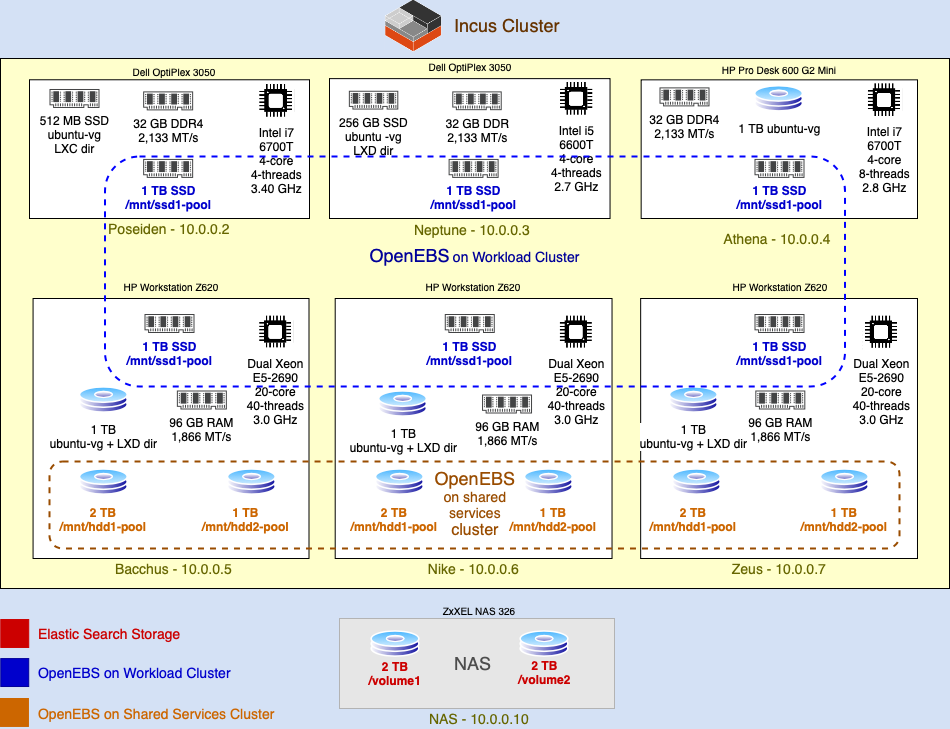Home Lab 3.0 with Incus Linux Containers
It’s been a minute since my last post, a couple of years. It’s time to get back to work. Well, work might be an overstatement. My home lab is a boondoggle at best. It’s no different than any other expensive hobby, like owning a boat. Just last night, I upgraded the first of three servers to the new, faster dual Xeon CPUs that I’m migrating to, and I was fist-pumping in my basement when it successfully booted up. Ah, life’s little pleasures.
In my next few posts, I will dive into everything I explored to bring Home Lab 3.0, pictured above, to life. Some of the topics we’ll explore are these:
- Hardware upgrades - One nice thing about old servers is that CPUs and memory are cheap. I upgraded all the CPUS (paired Xeon e52690-v2 3.00 Ghz processors for $35) to get more cores and support faster memory.
- Network redesign - I removed all but one of the VLANs I was trying to use with vSphere and drastically increased the CIDR range to support the Calico network on Kubernetes.
- Virtualization - I looked at virtualization from Harvester, Proxmox, MAAS, Canonical LXD, and Incus Linux containers. I chose Incus.
- Storage - I worked a lot with LVM and OpenZFS storage on my servers and plan to use OpenEBS on Kubernetes. I considered a Ceph cluster outside of Kubernetes, but it sounded too complicated for my needs.
- Kubernetes - At the moment, I’m going with kubeadm with kubespray, but I’ve looked a K3s, Microk8s, Charmed Kubernetes, just to name a few, and that is just to get started.
I look forward to sharing more throughout 2024.
